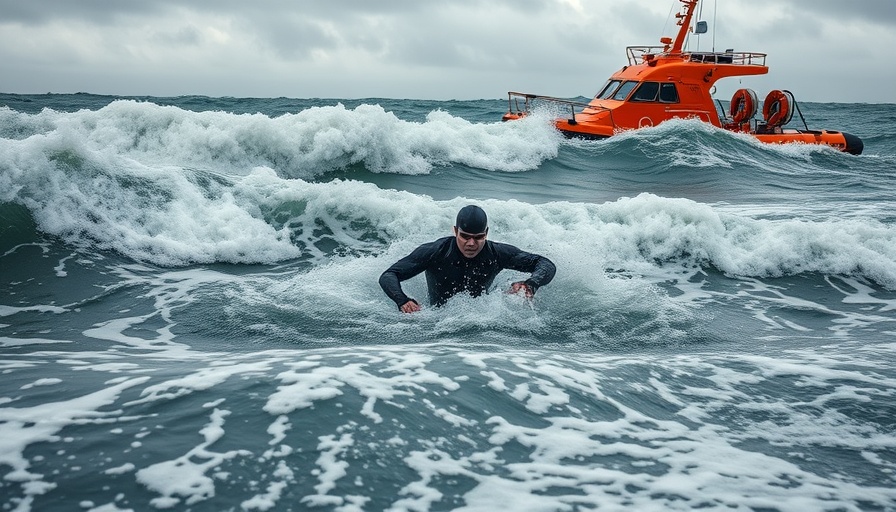
The Unexpected Dangers of Rip Currents: A Surfer's Tale
In a gripping incident off the coast of Porthcawl, Wales, a seasoned surfer, Ben Fraser, found himself in a life-threatening scenario when he was swept half a mile out to sea by a rip current. With 15 years of surfing experience, Fraser was used to challenging waters, but the gale force winds combined with the ferocity of the rip current posed an unexpected threat. This incident sheds light on the raw power of the ocean and the potential dangers surfers and beachgoers may face.
The Power of Community and Quick Thinking
Fraser’s harrowing experience began when he realized that reaching the rocky cliffs, a potential escape route, was too risky. Fortunately, a vigilant dogwalker spotted him in distress and swiftly alerted emergency services by calling 999. This highlights the importance of community awareness; sometimes, it takes just one person to save a life. Quick actions can lead to timely rescues, preventing further danger as daylight fades. Fraser expressed immense gratitude towards the dogwalker, emphasizing the crucial role that awareness and communication play in these emergencies.
Royal National Lifeboat Institution (RNLI): Heroes of the Sea
The RNLI rapidly responded to the call, with Gareth Collins from Porthcawl RNLI noting that rescuers approach every situation without judgment. This essential service not only saves lives but also provides invaluable educational resources on ocean safety. The RNLI's commitment to creating a safer environment for aquatic sports enthusiasts cannot be overstated. Their presence along the UK coast serves as a reminder of how preparedness can turn potential disasters into stories of survival.
Lessons Learned: Importance of Awareness and Education
This incident serves as a stark reminder of the ocean's unpredictability. Even the most experienced surfers can find themselves in precarious situations. Education on recognizing dangerous conditions, understanding water dynamics, and knowing how to respond in emergencies are vital. Engaging with local surf schools and lifeguard services can empower surfers and kayakers to navigate safely. Surfing is about freedom and adventure, but safety should always be a priority.
Riding the Waves Responsibly: Best Practices
For those planning to hit the waves, here are some best practices to consider:
- Know the Conditions: Always check local surf reports and understand tidal patterns.
- Be Alert: Use your surroundings to gauge conditions, and don’t hesitate to leave the water if you feel uncomfortable.
- Surf with a Buddy: Never surf alone. Having a partner ensures that help is nearby should a situation turn dangerous.
- Learn How to Identify Rip Currents: Look for gaps in the waves or channels of choppy water to spot rip currents.
The Future of Surf Safety: What’s Next?
As surfing continues to grow in popularity, with more individuals taking to the waves, the need for enhanced safety measures and educational programs becomes paramount. Advances in technology could lead to better communication tools at beaches, such as real-time updates on ocean conditions or alerts about dangerous currents. By fostering a culture of safety and awareness, the surfing community can help prevent accidents, ensuring that surfing remains the exhilarating and rewarding experience it is meant to be.
Fraser's ordeal is a testament to resilience, the power of community, and the importance of always being prepared when venturing into the unpredictable embrace of the ocean. Remember: while surfboards may float, it’s vital to stay grounded in safety.
Take Action: Be Prepared and Stay Safe!
As you gear up for your next adventure, make sure you're informed and prepared to handle the unexpected. Engage with local coastal safety programs, take surfing lessons, and always be mindful of the ocean's strength. Your safety is paramount—ride those waves wisely!
 Add Row
Add Row  Add
Add 




Write A Comment